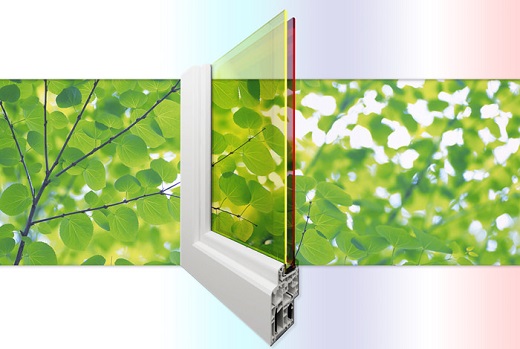Researchers at the Los Alamos National Laboratory in Mexico are using layers of low-cost quantum dots to develop double-pane solar windows that can generate electricity more efficiently, create shading and provide insulation.

The double-pane solar windows use two different layers of quantum dots to absorb the solar spectrum more efficiently. (Image: Los Alamos National Laboratory)
Published in Nature Photonics, the new window architecture uses two layers of quantum dots, each tuned to absorb different parts of the solar spectrum.
Quantum dots are tiny semiconductor structures measuring 2nm to 8nm in diameter that can be grown in large reactors using a chemical self-assembly process. They are highly efficient energy converters that become charged and emit different wavelengths of visible photons after being excited using short wavelength, high energy light. In addition to having applications in solar energy, they can be incorperated into LCD television to provide a dramatic improvement in picture quality.
To form the windows, the researchers deposit a layer of highly emissive manganese-doped quantum dots onto the surface of the front glass pane and a layer of copper indium selenide quantum dots onto the surface of the back pane. The front layer absorbs the blue and ultraviolet portions of the solar spectrum, while the rest of the spectrum is picked up by the bottom layer.
Following the absorption of light, the dots re-emit photons at longer wavelengths, which are guided by total internal reflection to the glass edges of the window. There, solar cells integrated into the window frame collect the light and convert it to electricity.
Key to the development of the new solar window is a technique known as ‘solar-spectrum splitting’, which enables higher- and lower-energy solar photons to be processed separately. The higher-energy photons can be used to generate a higher photovoltage, boosting the overall power output. This approach also improves the photocurrent, as the dots used in the front layer are virtually ‘reabsorption free.’
‘Because of the strong performance we can achieve with low-cost, solution-processable materials, these quantum-dot-based double-pane windows and even more complex luminescent solar concentrators offer a new way to bring down the cost of solar electricity,’ said lead researcher Victor Klimov. ‘The approach complements existing photovoltaic technology by adding high-efficiency sunlight collectors to existing solar panels or integrating them as semitransparent windows into a building’s architecture.’
The manganese ions incorporated into the front glass pane serve as highly emissive impurities that activate when light is absorbed by the quantum dots. Following this activation, the manganese ions emit light at energies below the quantum-dot absorption onset, allowing for almost complete elimination of losses due to self-absorption by the quantum dots.
The work was supported by the Center for Advanced Solar Photophysics (CASP), an Energy Frontier Research Centre funded by the U.S. Department of Energy.
Related articles
Researchers improve solar cell efficiency using nanostructures

